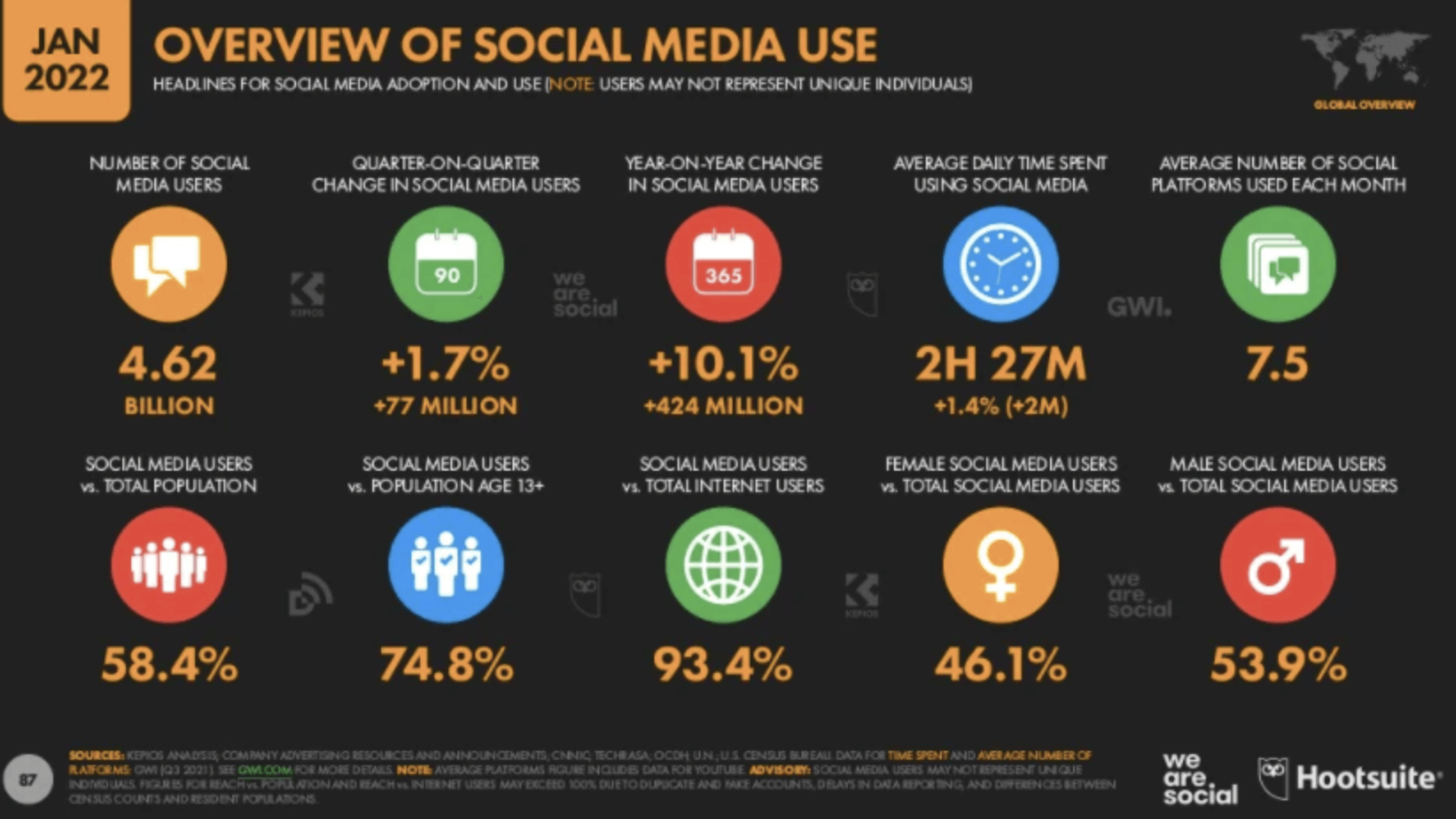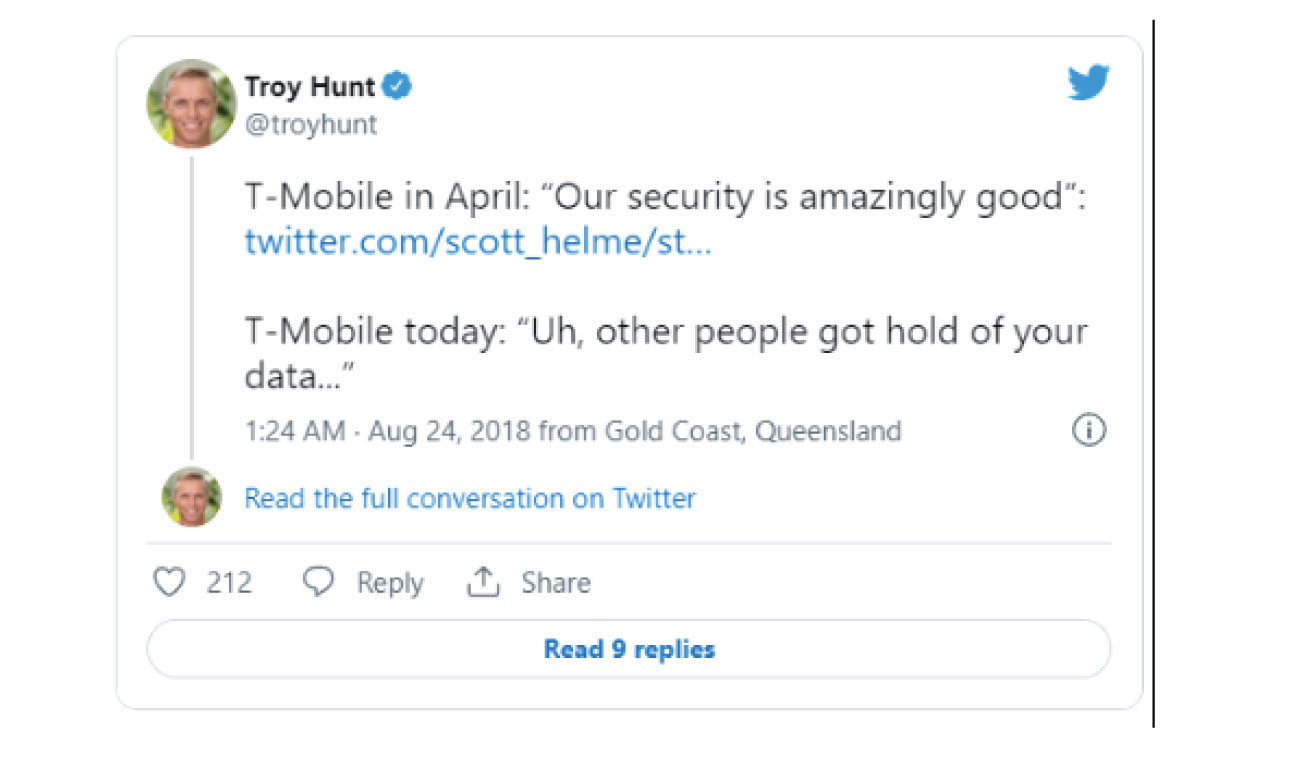11 Social Media Pros & Cons for Business: Worth Your Time?

In this article
As traditional advertising continues to lose traction with Millennials and Generation Z, brands are having to pivot, and many have begun to increasingly rely on social media to connect with younger generations of consumers. This year, brands are expected to spend $56 billion on paid social media marketing, according to Statista, up from $40 billion just two years ago. The number-one social media marketing goal for 82% of organizations is to raise brand awareness, according to Meltwater’s State of Social Media 2022 report, followed by “increase brand engagement” and “acquire new customers.”
“The beauty of social media marketing is you can experiment and try new things with (mostly) low stakes,” said Kelsey Gillhooley, marketing manager for brand and social at Talkspace. “Once you gauge the interests of your audience—and see which content might actually drive conversions—you can better define the cadence.”
But is a social media strategy right for every brand? We say: it depends. Keep reading to learn more about the pros and cons of a social media presence, and how businesses can most effectively deploy a social media strategy.
Social Media Usage
According to Smart Insights, more than half the world (more than 4.5 billion people) now uses social media, with the average daily time spent on social media sites totaling two hours and 27 minutes. The COVID-19 pandemic cemented the role of social media platforms as a conduit for people to interact with brands, as platforms such as Instagram and IGTV, Facebook, Twitter, and TikTok provide businesses with exposure and organic engagement they can’t obtain elsewhere.

Social Media Pros & Cons for Businesses
Social media has become integral to digital marketing. But this doesn’t mean that social media benefits all brands in equal measure. We’ll now break down some of the pros and cons of social media, so that you can make the decision that’s right for your brand or business.
Social Media Pros for Business
One of the biggest advantages of social media marketing is that it’s a relatively cost-effective way to drive website traffic, increase brand awareness, and generate conversions. But there are other advantages too. Here’s what that looks like in more detail:
Brand Awareness
Brand awareness is the extent to which a brand is recognized by potential customers. Some brands have become so recognizable that their brand name has effectively become a noun or verb that stands in for a product’s actual name—i.e. “I need a Kleenex,” or “Let’s Google that.”
Social media is a cost-effective way to build this kind of awareness. Compared to traditional marketing campaigns—TV ads, print ads, mailers, and so on—social media marketing has a much higher return on investment, and comes at a much lower cost.
Website Traffic
Another advantage to social media marketing is that it drives website traffic. You can’t click on a billboard, but you can click on an Instagram post, and brands are maximizing the potential of this with social media posts that link to a product page or blog post.
Drive Sales & Leads
Driving sales is at the core of any digital marketing strategy, and social media marketing is no different. Many brands now use social media platforms to announce new products, run promotions, and host giveaways. Just as brands can use compelling posts to link to their website, shoppable tags allow a brand’s followers to simply click on an image and purchase what’s being advertised.
“Adding value means you’re serving your community,” said Tani Lopez, founder of social media consultancy TANIcollective. “It’s an exchange of your expertise, experience, or entertainment for people’s engagement.”
Regular Visibility
Visibility is the key to building brand awareness. If you want to turn your brand into a household name, then you need to enmesh your product into the lives of your customers.
Customer Support & Feedback
Companies like Amazon, Spotify, and Lululemon use social media platforms to provide expedient customer support. Providing support on social media requires businesses to search for and respond to mentions of their brand, including reviews, complaints, and questions. Some businesses also provide real-time customer support via Facebook Messenger and WhatsApp. According to data from Facebook, 20 billion messages are exchanged every month between people and businesses on Facebook Messenger.
Promote Content
Businesses promote content such as blog posts, lookbooks, and product pages by posting them on social media. This drives brand awareness, and enables brands to build credibility. Companies can also promote gated content on social media to generate leads.

Demographic Insights
Social media provides a trove of data that shows companies who their customers are, what they think of the brand, and what content they engage with the most. According to Sprout Social, 85% of executives surveyed report that social data will be a primary source of business intelligence for their company moving forward.
Social Media Cons for Businesses
While there are plenty of advantages to social media marketing, there are some downsides too, and any brand should be aware of these when strategizing.
Risk of Negative Exposure
Brands are also under mounting pressure to assume a political stance on social media, where silence during times of social unrest is often interpreted as complicity. However, brands should also avoid indiscriminately supporting social movements, as this can come across as thoughtless. “Be thoughtful and intentional about your content,” said Amanda Harrison, social media manager at Hubilo. “Just because it’s National Cheese Day doesn’t mean Ben & Jerry’s will post about it, but you will certainly see them posting content on National Ice Cream Day!”
Staffing, Budget, and Resources
While social media marketing costs less than traditional marketing initiatives, it isn’t free. Advertising on social media can be expensive. According to an analysis by The Content Factory, the average organization spends between $200-$350 per day on social media marketing. This works out to between $72,000 and $126,000 per year.
To make a social media strategy work, brands have to spend time creating and posting content, responding to customer queries, monitoring KPIs, and continuously adjusting their content strategy to keep their audience engaged. This means shooting videos, hosting live streams, taking original photographs, developing paid and organic social media campaigns, and doing content marketing. Undoubtedly, being a social media manager is a full-time job.
“Video is key right now,” siad Lopez. “If you are posting static images or photos on a consistent basis that is not enough to reach your community; I recommend spending time producing Instagram Reels or Stories.”
An Unforgiving Environment
Given that social media is a public forum, harsh customer feedback can harm a brand’s reputation. On social networks, negative mentions of a brand are visible to current and potential customers. If a customer is unhappy with a brand, they can vent their frustrations in a social media post that is seen by hundreds of thousands of other users. So responding promptly to complaints and offering a real resolution will help strengthen a brand’s reputation in the eyes of its followers.
Security Concerns (Internal and External)
Unmonitored or unused social media accounts are a prime target for hackers. Once hackers gain control of a company’s accounts, they can post fraudulent content, spread misinformation about a brand, or distribute malware. Companies should beware of fake accounts bearing the company’s name, as these are often used for phishing scams. Performing a routine social media audit helps root out accounts that may be vulnerable to attack.

Which Social Media Networks Are Worth Your Time?
If you do decide to employ a social media strategy, it’s important to consider which platforms you’ll use. Consider who your target audience is, and where they’re most likely to engage with your content. You can also take an online social media marketing course to help better define your target audience. Let’s break this down by network:
Despite a declining user base, Facebook remains the most popular social platform worldwide, with 2.91 billion monthly users, according to Statista, 79% of whom are active on a daily basis. Facebook is still the favored platform for the 35-44 age demographic, making it ideal for brands that want to build an audience with this cohort. Facebook also provides a range of tools to help businesses, like its ad manager for targeting more specific audiences.
Twitter’s user count is expected to reach upwards of 329 million users this year. Although a quarter of American adults use Twitter, the audience skews predominantly male, according to Statista. Marketers should also consider that a large share (about 34%) of Twitter users earn more than $75,000 a year, making this platform ideal for luxury brands.
Instagram is Gen-Z’s favorite social media platform, even outranking TikTok. Only 13% of Instagram users are over the age of 45. It’s an ideal platform for businesses that create original photography and short-form videos, and Instagram provides businesses with an easy-to-use social commerce platform so their followers can complete purchases in the app.
Tiktok
In September of 2021, TikTok reached one billion monthly active users. 69% of American teens are on TikTok, and 90% of its users log in every day, which suggests a very active, engaged audience. In fact, TikTok users spend an average of 89 minutes a day on the app. But given that the platform is optimized for short-form video, brands may need to tweak their content strategy to make TikTok work for them.
As the world’s largest professional networking platform, LinkedIn has 756 million users, with an estimated 16% who log in every day. While LinkedIn is primarily used for job searching and networking, businesses use LinkedIn to find prospective customers, promote content, and participate in industry discussions.
Since you’re here…
Want to start your career in social media marketing? In our 8-week Social Media Marketing Certificate Course, you’ll build your CV with real-world projects, work 1-on-1 with an industry expert and complete an end-to-end social media campaign. Peep our student reviews to see what we can achieve together.


![How to Do a Social Media Audit [+5 Templates and Examples]](png/how-to-do-a-social-media-audit-5-templates-and-examples-380x235.png)